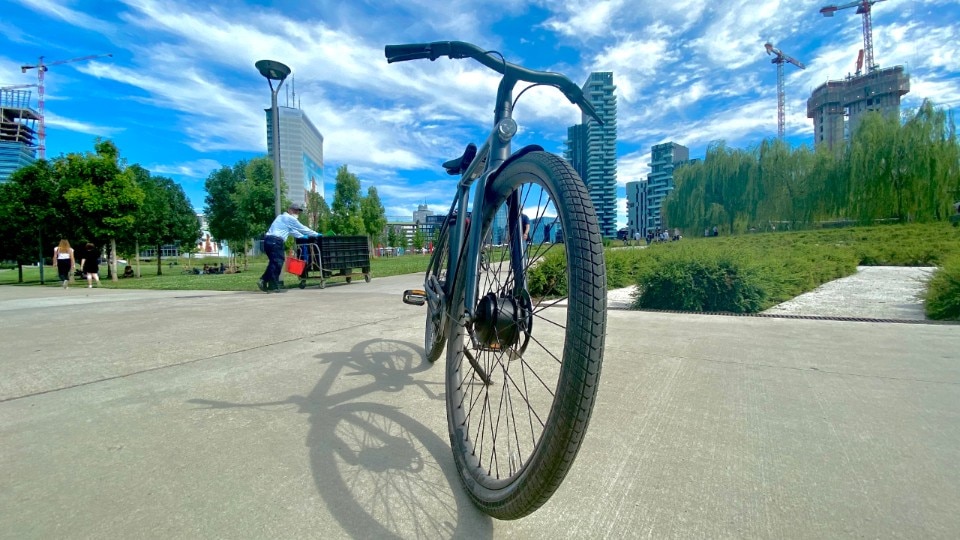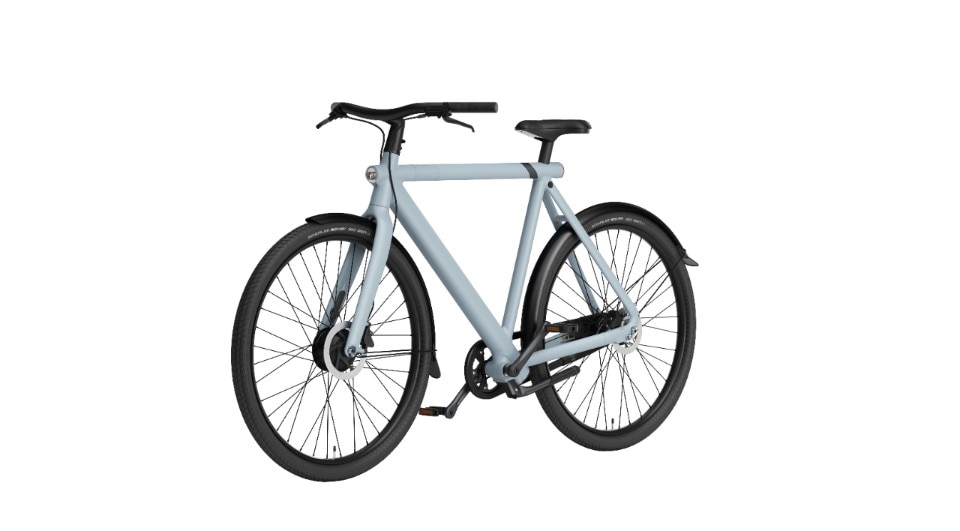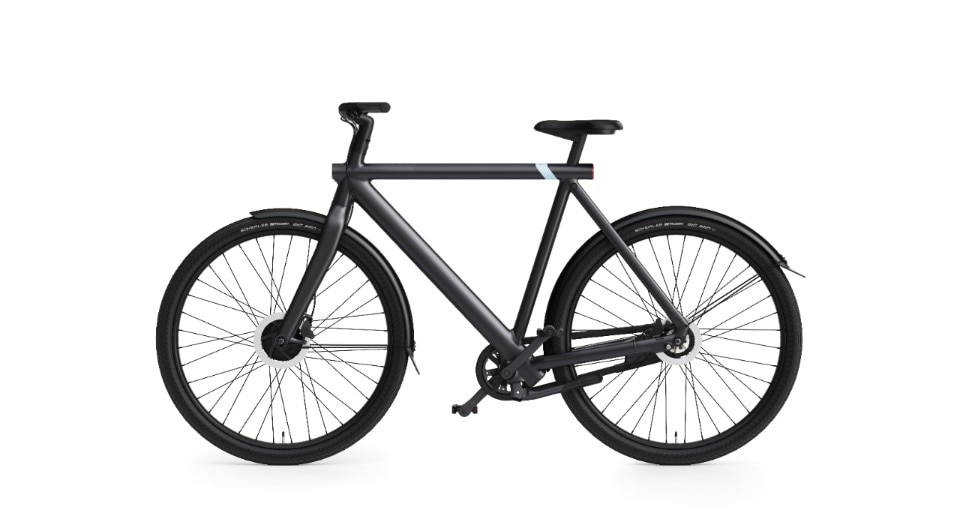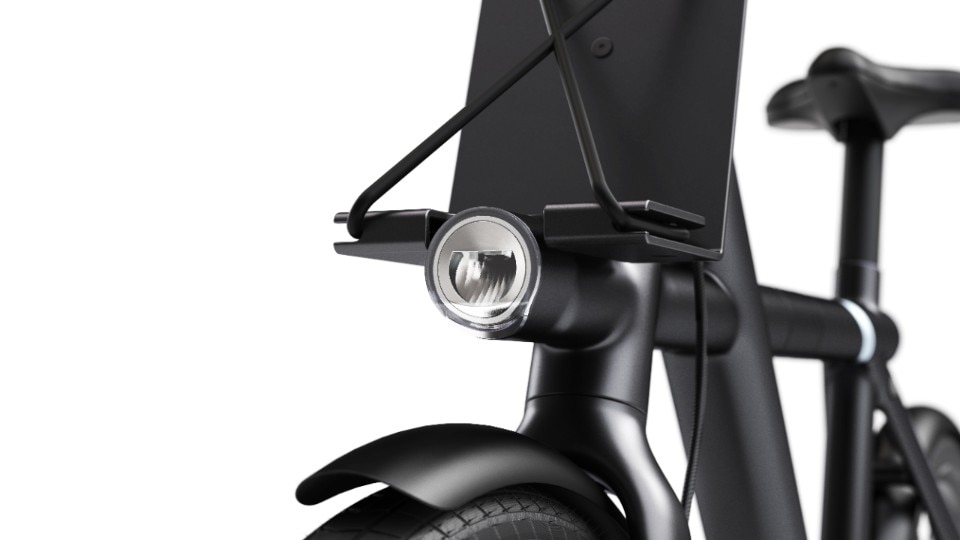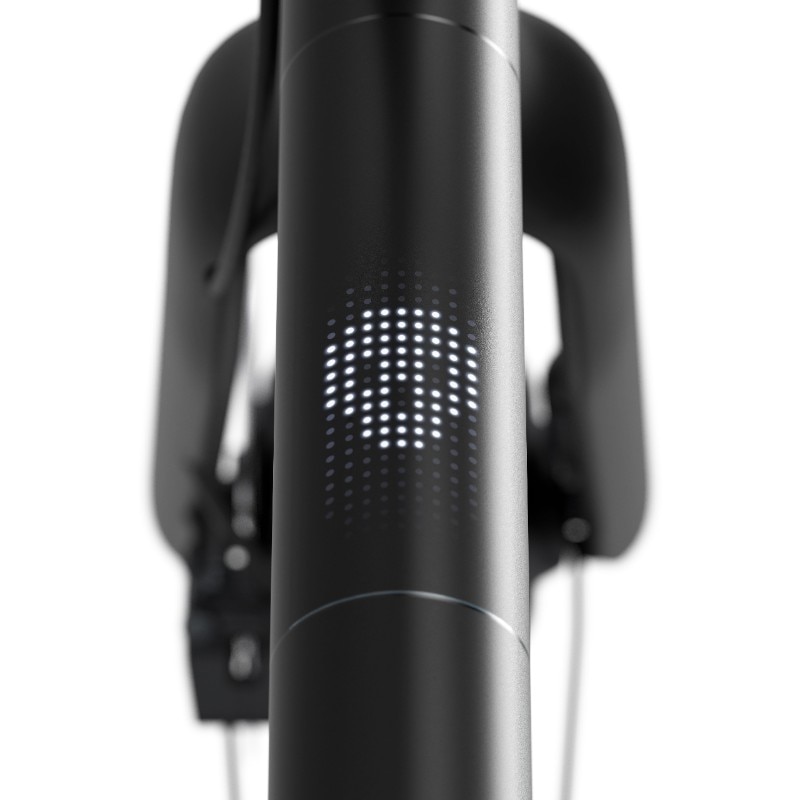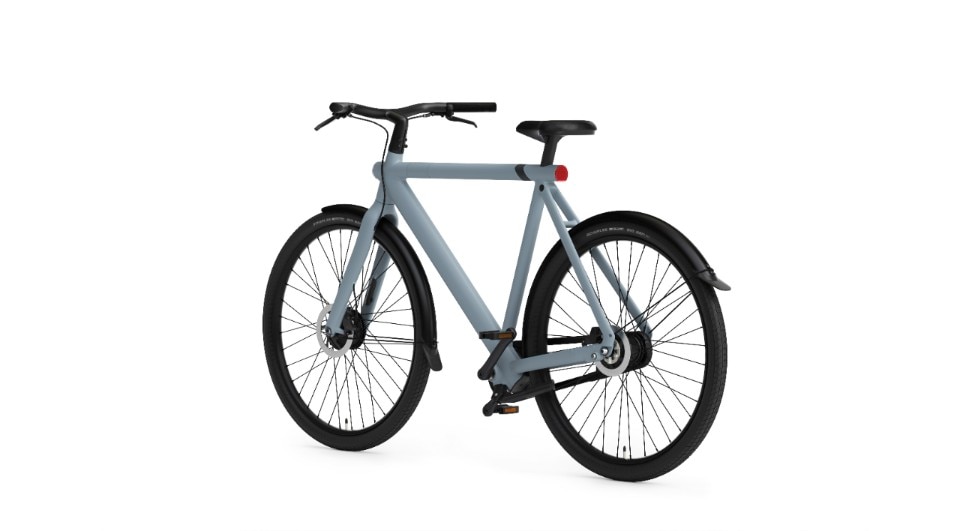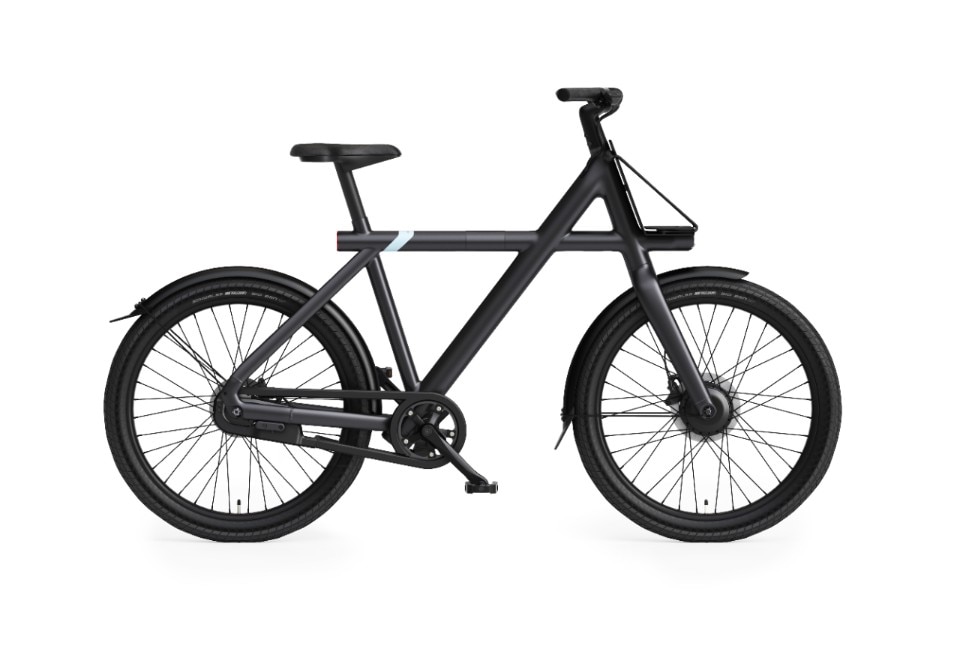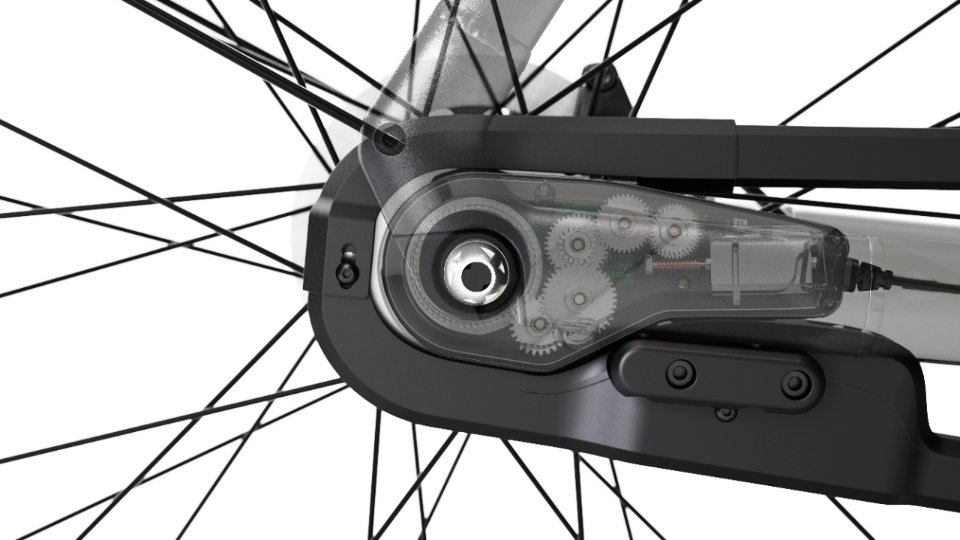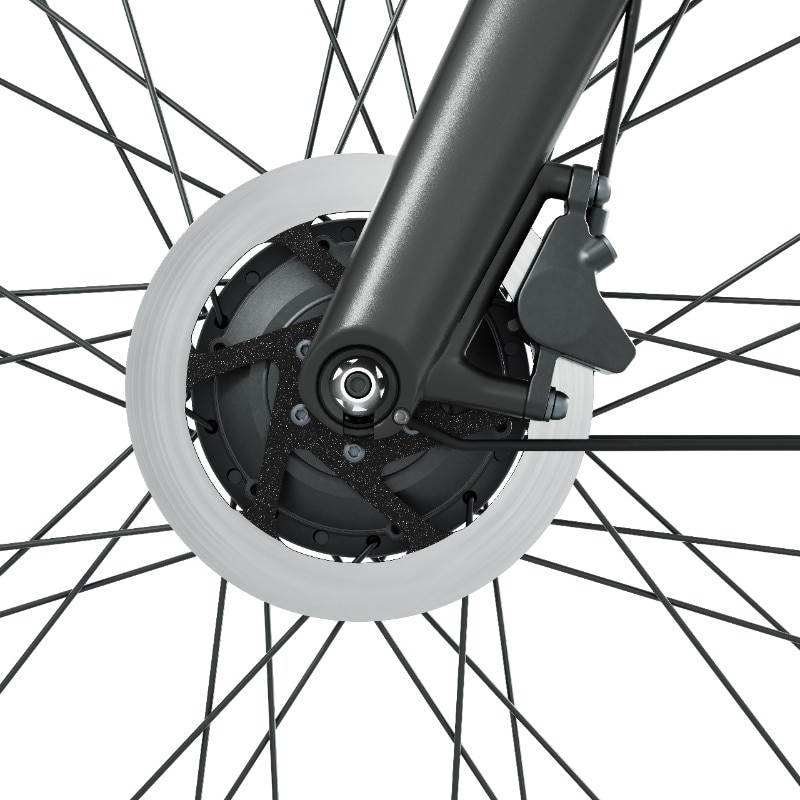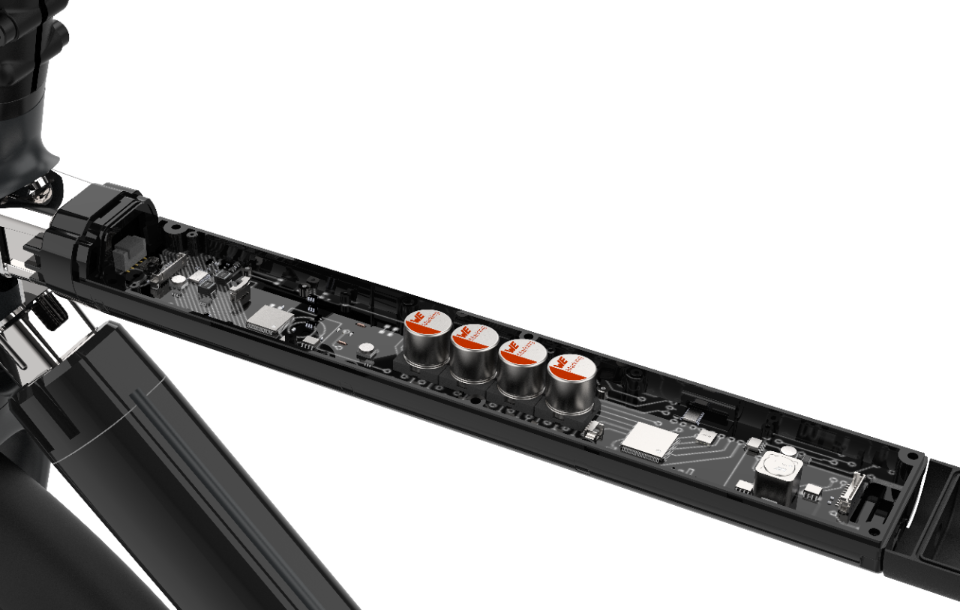Corso Buenos Aires is a long and busy commercial street. It is to Milan what the Fifth Avenue is to New York or Nathan Street to Hong Kong, made the right proportions. The Corso, which is an ideal extension of the city centre and the Fashion District, is located on a street that anciently led to Venice: in The Betrothed, Manzoni made Renzo take this very same street when he left Milan; here, there was the Milan-Monza bridleway, the first interurban road in Italy, which was electrified in 1900. Before the coronavirus lockdown it was one of the highest turnover districts on the planet. Right here, on both sides of the street, night after night, block after block, the Municipality of Milan built a new cycle lane, one of the first of the post-COVID sustainable restart plan. Made with simple road signs, it serves as a safe route for bicycles and scooters. However, this project has attracted several criticisms, giving a clear idea of what Milan and perhaps the entire Italian country think of bicycles. Shopkeepers, who have always been the most conservative people in the area, have complained that taking away a part of the street from cars would discourage people from going shopping in the area, making it more difficult to recover economically from the lockdown; in the meantime, in line with the idea that “more cars equal more well-being”, many groups of car extremists argue that, in order to restart the economy, you have to accelerate consumption and this can only happen behind the wheel. Nothing surprising: according to the stereotypical Milanese, which is actually a kind of person that’s very common to meet, the bicycle is a vehicle that you only use in your free time and, as a leisure vehicle, it should give way to work-related vehicles such as scooters and cars on weekdays. After all, at least at the beginning, even those who are used to riding the bike every day were surprised: they saw for the first time an unusual bicycle lane weaving and winding through traffic, squeezed between the cars parked on the left and the sidewalk on the right. Just like when you receive a gift, but it’s not the one you expected. Since I live right at the end of Corso Buenos Aires, I used this bike lane a lot during the 15 days I moved around the city riding the Tesla of e-bikes. Created in the Netherlands, loved by the Germans, and idolized by the tech and trade press… how does the new VanMoof S3 behave when it’s being used far from home, and not in a city that is experiencing a sudden bike craze like Paris?
A bike in a box
The day I receive the VanMoof S3 it’s raining. The courier gets a huge box out of the van, and it makes it touch the floor with a thud. I bring it inside, not without some difficulty. Luckily, I live on the ground floor. VanMoof’s Media & Communication Specialist Barry Bracken explained that my bike travelled inside the old model’s (the S2) package, while the new one is more compact. But not perfect: browsing through various VanMoof Facebook groups, I read about many people who, after buying the new model, complained about receiving damaged bikes, with broken packages and handlebars peeping out of holes in the cardboard. However, all damaged bikes can be sent back to VanMoof and be promptly replaced. “It’s important to remember that this problem involves a small number of bikes only,” Bracken explains, adding that since they produce and assemble their bikes “in house”, in their own facility, it’s easier to solve the problems. And VanMoof has already announced that they will optimize the packaging. Inside the bike package I find a little box with all the necessary keys, an instruction manual, some lube, and the charger, which is much heavier and boxier than I expected, and is hidden within the frame. After properly orienting the handlebars and mounting the saddle, with the set of keys and accessories provided by VanMoof at hand, it’s time to connect the bike to the phone by using the credentials that Barry gave me. At this point, the bike is ready to go, and since a friend invited me for a coffee and my lunch break isn’t over yet, I hop on and go. The battery is at about 50 percent, and it’s no longer raining.
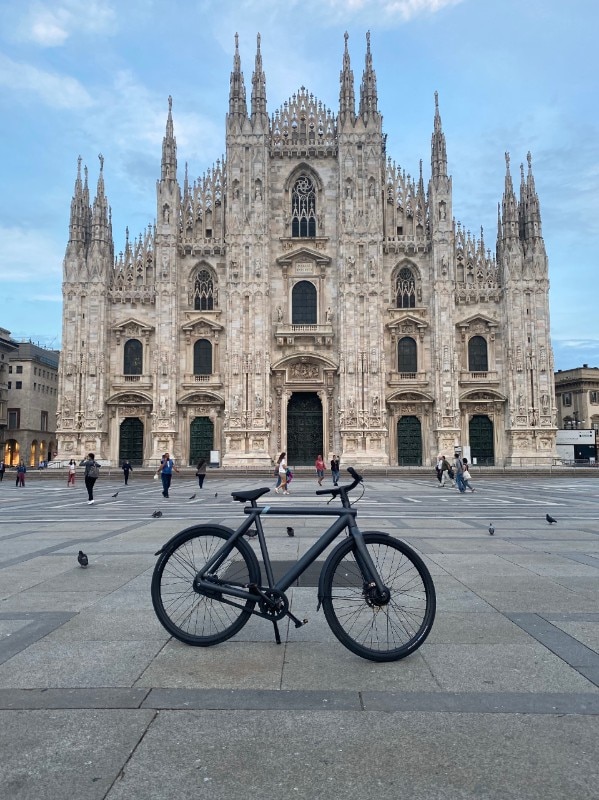
How’s the first time riding an electric VanMoof?
To make a long story short: bizarre. Especially if you haven’t attentively studied the bike before hopping on the saddle, as I did: I simply turned it on - it actually turns on by itself when you approach it with your smartphone in your pocket - and started pedalling. The bike does the rest. It is not a scooter: it is proudly a bike, so it moves only if you pedal, but at the same time, the front-hub motor helps you a lot. The VanMoof S3 is certainly not a light bike. On the contrary, compared to the essential and very slim fixies or single speed bikes that I often see whizzing around Milan, it feels like riding a little tank. But compared to a traditional bike, it seems to be flying. I ride nimbly along the Buenos Aires cycle lane; I climb effortlessly up the Porta Venezia ramparts and I ride in the direction of the city centre. The LCD display shows in real time the speed and the battery’s charge level; the button on the left handlebar activates the digital bell, whose sound you can change from the app, and if you hold the “Boost” button on the right, the bike immediately accelerates. At first, I thought it could be a useful feature to use just to nip away from traffic lights, but only later I found out how actually precious it is. However, for being the first time I used it, it was already almost a magical feeling to pedal with the help of the bike, thanks to which you can pedal faster and you also get an easier start from stopped positions, which usually is the biggest problem when riding a bike in the city. In the meantime, I arrived at my destination: I park and lock the bike, and I prepare the Satispay app to pay for the coffee, but not before activating the anti-theft system.
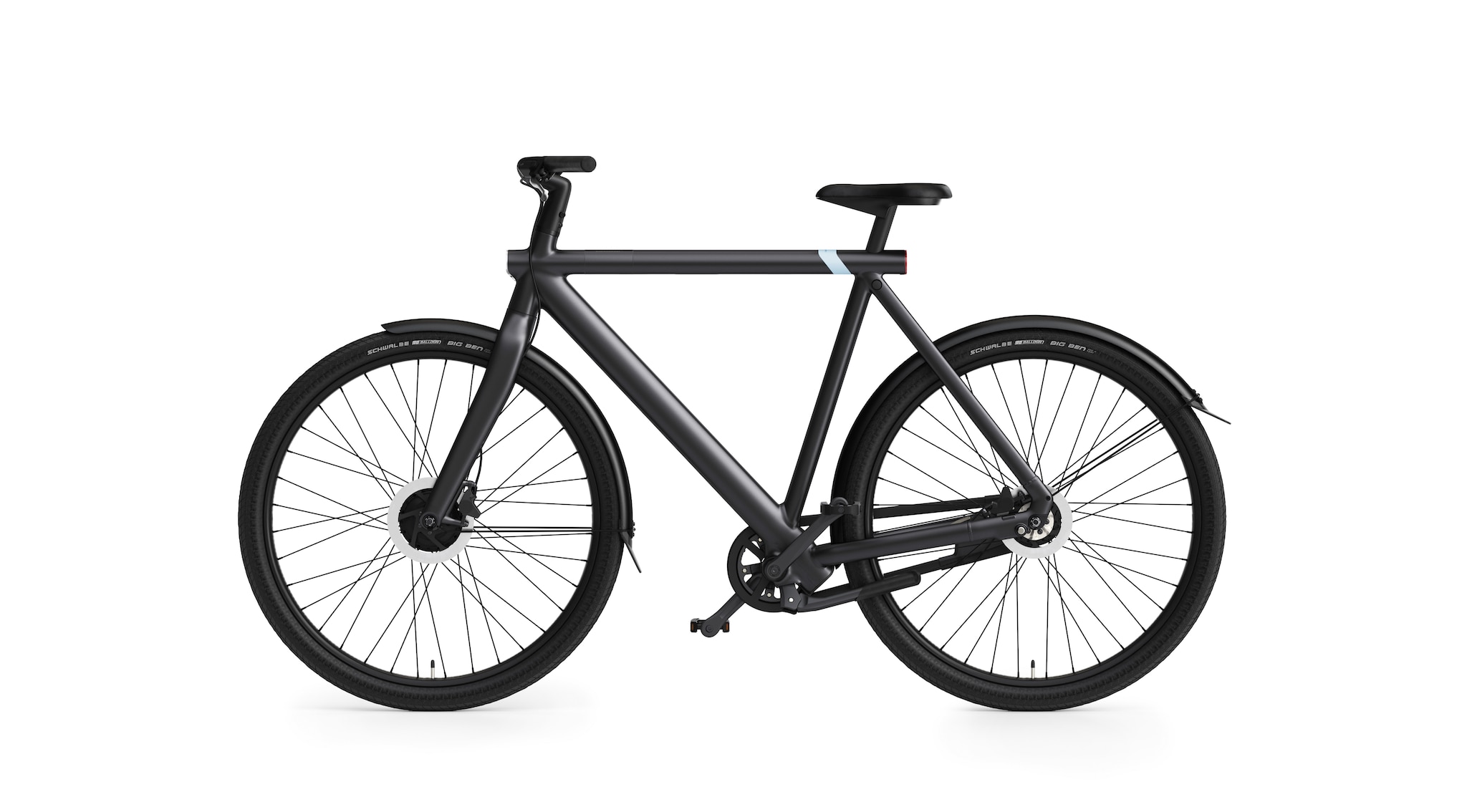
Peace of mind
That’s right, the VanMoof has an anti-theft system that locks the bike that you can activate by pressing a button on the rear wheel. If someone tries to move the bike, it emits a sound, that at first is punctual, and then becomes more persistent. In Italy, the country of Bicycle Thieves, maybe it would have been more appropriate to choose something that sounds like a siren or more explicitly like an alarm. I tried several times to “steal” my own bike and nobody turned around to see what was happening. VanMoof is perhaps the only company to offer a service to find your bike in case it gets stolen, thanks to a chip hidden within the frame, which lasts three years and costs about 300 euros. Either they find your stolen bike, or they give you a new one. This has nothing to do with the location of the bike, which can be seen on the app and is completely managed via Bluetooth, but Bracken points out that things may change in the future. Instead of using the key to lock and unlock the VanMoof, I buy one of those combination bike locks on Amazon, and using it becomes much simpler. And it feels very safe.
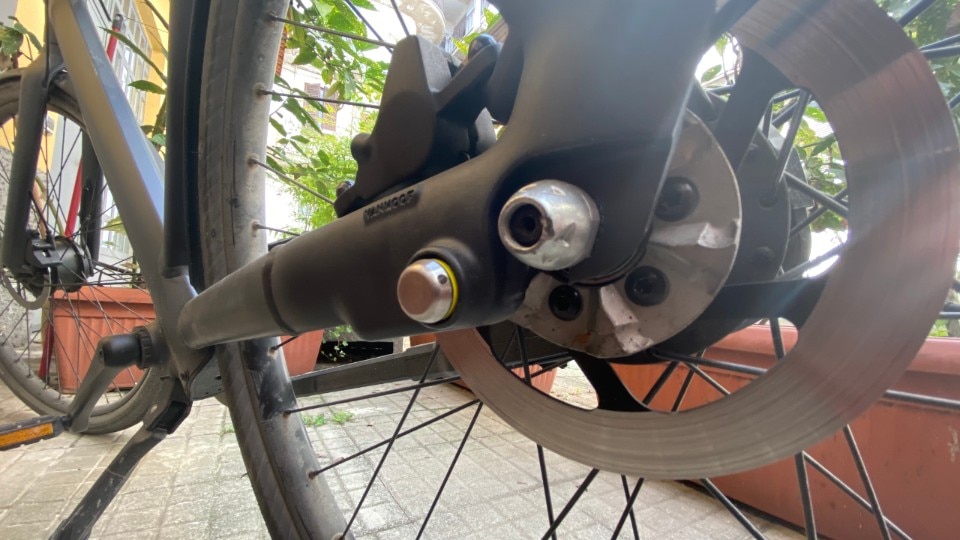
“The Tesla of e-bikes” (not my words, but I fully endorse them)
In the S3 review that Matt Jancer wrote for the American edition of Wired, there is a part in which he tells how often his bike got the attention of many passers-by in New York, even attracting a small crowd that gathered around him in Central Park. Well, I can safely say that when it comes to Milan all this didn’t happen, even though my friends started calling it "The Spaceship". The VanMoof S3 is an extremely contemporary interpretation of a traditional Dutch city bike, with sturdy lines and a matt and polished frame that almost reminds of a MacBook. The bike has double fenders and thick wide wheels to make the ride more comfortable, a front-hub motor and hydraulic disk brakes developed by VanMoof, integrated battery - yes, when you want to recharge it you can’t remove it from the bike - hidden within the frame; the latter is characterized by a tubular and protruding barrel, with the integrated lights at both extremities, which is kind of the signature of the brand, available in two colour variations, black or light (a cyan-like colour). It can fully recharge in 4 hours, or by 50% in 80 minutes. It’s a solid and big bike, it weighs almost 20 kilos and it’s not for everyone: I, who am a little more than 170 centimetres tall, use it quite comfortably, but who is shorter should opt for the other model, the X3, with lines that make it look like a reinterpretation of a BMX (any Stranger Things fan here?), some features inspired by Dutch women’s bikes and smaller wheels. The first X was designed for Japan: less classic in its appearance, putting an S3 Mini in the catalogue would not be a bad idea. Anyway, weighing almost twenty kilos, both VanMoof "3 Series" bikes are not great to take up the stairs: this will complicate life for many people when they need to recharge it in the evening. In Amsterdam, they already rent special spaces where bikes can be charged in the evening. The two models, launched in April, are the only ones that can be purchased on the site today: founded in 2009 by two Dutch brothers, Taco and Ties Carlier, with the ambition to set a new standard for urban mobility, just like Tesla, the company is based on a system of direct sales to the public, via internet or through a handful of stores present mainly in big cities in Germany, the Netherlands, the UK, the US and France. Thanks to the great sales of the S2, VanMoof has been able to optimize the production of its new model, launching a new bike onto the market for less than 2000 euros, almost half the previous price, with 15 thousand units sold since its launch in April, and delivery times that can even take months. VanMoof, which grossed ten million euros in 2018, expects to gross around one hundred million this year.
4x4
They say Milan is a potentially perfect city for riding a bike (which must be flat and small in size). Actually, there are many elements currently discouraging the use of bicycles: the many paved streets, which are often uneven and crossed by tram tracks, which only rarely circulate in preferential lanes. Italy is the first European country for the production of bicycles by extraordinary brands: Bianchi, Colnago, Pinarello, Cinelli and many others, mainly based in Northern Italy and near Milan. Yet, the economic capital of the country is certainly not a city designed to safely ride a bike: in the city centre there are no bicycle lanes, and the few you can use are usually in short dead-end one-way streets, which makes it really hard to safely ride the bike. Often, cyclists ride on the spaces dedicated to pedestrians, like crossings and sidewalks. Riding the VanMoof has made my life a bit easier than with my fixie: the wheels are wide and do not fear uneven paving, while the fact of pedalling more easily allows you to take longer routes if you want, without having to cross the city centre. To understand how a VanMoof S3 moves, the number 4 is fundamental: in fact, there are four different power assist levels, plus a “0” level for those who do not feel the need for the pedal-assist feature; but there are also four different gears. Unlike your old mountain bike with Shimano gears, the bike changes gears automatically, because everything is managed by the bike’s brain; you can customize the parameters directly from the app.
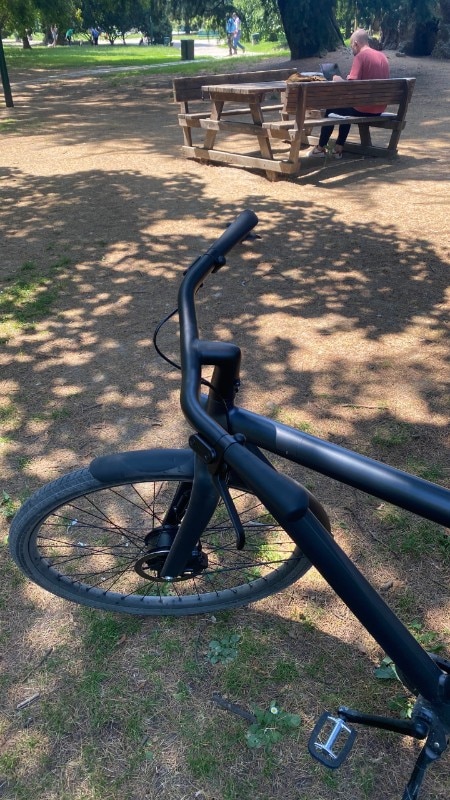
Customize it!
If the VanMoof is beautiful, its community is even better. When Barry Bracken told me that the saddle of the bike I’m testing is not the final one, I thought the saddle is usually the first thing I change after buying an already assembled bike. But on the dedicated Facebook and Reddit groups you can see new and old bikes accessorized with bags of every materials and brands and colors, home-made luggage racks, loud-speakers put in bottle holders, front and rear baskets of every shape and sizes, even made from fruit crates, incredible mirrors, grips of every material and shade. And always from this digital laboratory come ideas for an even more functional bike: with an integrated Bluetooth speaker connected to the smartphone, for example. And I discover a start-up that sells an alternative chain that it said to be even better than the standard one. But for now, all I’d like to have is a less heavy battery to carry around with me.
Zen and the art of turbo
And it’s the VanMoof community that introduces me to the endless ways these bikes can be used. In a discussion on Facebook, the members of VANFMOOF ing use strange formulas to explain how they use, often daily, their electric bikes. Like: “70% speed 1, 20% speed 2, 10% turbo”. Many people use the bike’s turbo boost feature, which gives a near-instantaneous boost, even at the price of having to recharge the bike every night. I try this technique and it actually works: if you have no one in front of you, maybe you’re in the outskirts of the city, and you want to ride your bike at full speed, press the turbo boost button and go. That’s how I change the way I use the bike, preferring more generous doses of "gentle pushes" over the pedal-assist feature. It’s all exercise. By the way, in Europe, pedal-assist bikes have a maximum assisted speed of 25 kilometres per hour, while in the United States bikes can go up to 20 miles per hour, or 32 kilometres per hour.
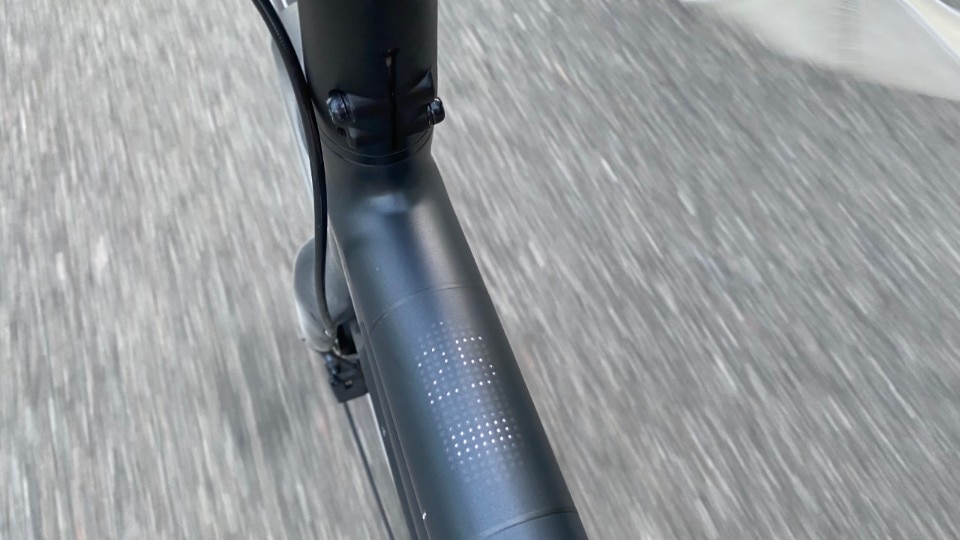
Going to work with the VanMoof (under the pouring rain)
The editorial office of Domus is in Rozzano, a southern suburb just outside Milan, located more or less diametrically opposite to where I live. After working from home for the whole duration of the lockdown, I was in the office only once, using my bike. The second time, I’m riding the VanMoof. It’s raining. I drive the S3, first I cross Milan from north to south, and then I sketch along the avenue that leads out of the city, past the Parco Agricolo, past a big shopping mall and over the ring road. A very interesting suburban landscape. I ride along cycle lanes, cobbled streets, roads full of potholes, I decide to shorten the route by crossing the centre, I take ring roads, I avoid being splashed by cars, I put the S3 disc brakes to the test when an old man in a car cuts me off, I breathe smog and rain, I sweat in my mask, I take a bridge that was perhaps forbidden to bikes... I’m using the turbo boost feature anytime I can. I ring the bell at people walking on the bike lanes, someone jumps in terror. Without pedalling too hard, using the second power assist mode, it takes me about forty minutes to get to work, against the hour or so it takes with the traditional bicycle. And I sweat a lot less, thanks also to the weather. And I felt even safer. In all, from home to work and work to home I used up 30% of the battery.
The app
VanMoofs aren’t just electric. They want to be smart. And you can see it from the app, which at first looks very simple and then shows you a tutorial through a very intricate set of options that may scare first-time downloaders - but at VanMoof they’re working on making it more and more accessible, Bracken assures me. There’s a map with the last detected position, a picture that recapitulates all the rides with a satisfying quantity of stats, and then the actual settings panel: what level of pedal assist you want, the sound of the digital bell, automatic transmission settings, the possibility of unlocking the bike by simply approaching it. And a thousand other little tricks. Of course, the way to become really ‘smart’ is still a long way: it would be useful to be able to make the bike ring at a distance (yes, just like with the iPhone), have even rudimental route indications on the integrated LCD display and help pedaling when you are, for example, upwind, or in other difficult situations. Not to mention the utopian dream of every urban cyclist ever: a seat that lowers when you are waiting at traffic lights.
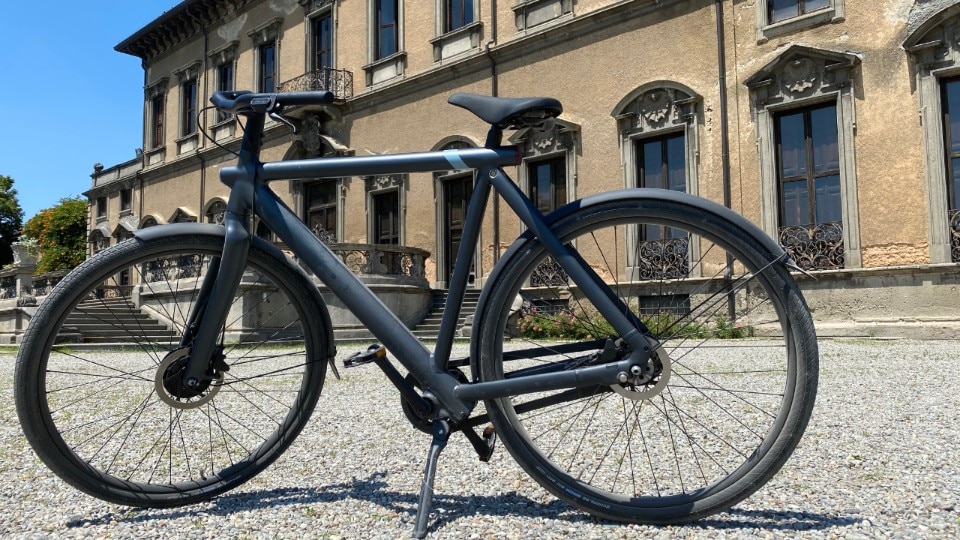
Out of town and back
Once an essential place for the phenomenal economic growth of Milan, today the Navigli are associated mainly with the area that bears its name, a district located around the Naviglio Grande and the Naviglio Pavese, best known for its pubs and clubs greatly appreciated by the tourists of the post-Expo period. On the opposite side of the city flows the other great Naviglio, the Martesana, which used to connect the city with Lake Como, flowing into the river Adda. Along this canal runs a long cycle lane that leads to Lecco, running along the river Adda. During the summer it becomes a hodgepodge of families taking walks, electric scooters, various bicycles, elderly people, groups of children. There is a succession of bars and ice-cream stands, votive chapels, little-known pleasant places like Cassano, the best location to organize summer barbecues, or places of interest like the former workers’ village of Crespi d’Adda or the many testimonies of when Leonardo lived in this area. It is a perfect representation of the routes dedicated to bicycles in this area, oriented towards tourism rather than daily trips and in any case often discontinuous, with unpaved passing through little towns such as the one that, starting from Cassano, runs along the Martesana until it joins the Adda. The VanMoof is a bike designed explicitly for urban landscapes, but it is also very practical for a weekend spent out of town: the wide wheels are certainly not suitable for going off-road, but they are very good for dirt roads, the disc brakes are great both for zigzagging among Sunday walkers and riding on the slippery ground, and the turbo feature allows you to travel at a certain speed along those less pleasant parts of road - for example if you have to ride for about ten kilometres on the highway, under the hot June sun. My initial plans were to travel to and from Lecco, but the road was closed for work - another great constant of the cycle lanes in Lombardy. So, I stopped at a bar in Cassano d’Adda for a drink, with my bike on sight and the anti-theft system on, the barbecues in the background on the other side of the river. It was a very easy hit-and-run, I clocked up 50km without any difficulty with the battery down to 40%. Tomorrow I’ll go back to the everyday life in Milan. And as long as the battery is charged, I’m not that worried about it.


